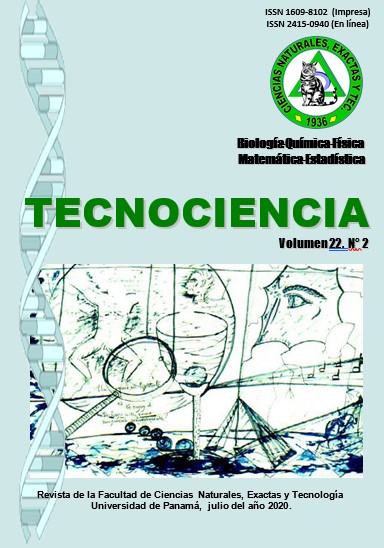

In order to determine the diversity of Euglossini bees in both forest and crop areas of Cerro Turega's Water Reserve, Cocle province, Panama. We collected bees both in the underwood and in the canopy using manual traps (Bottle traps) and the zigzag method. For 6 months (february to july of 2019), three essences were used in an entomological net to attract the bees to be collected. The collected specimens were identified to species in the MIUP of the University of Panama. A total of 769 bee specimens were collected from the orchids, classified into 22 species and four genera of euglosines for Cerro Turega’s Water Reserve. The Shannon-Wiener diversity index for the total sample was H'=2.78. The Simpsom index was Dsi=0.74 and a species dominance was D=0.26. We attempted to measure the effectiveness of the methods used for this sampling, therefore; results showed that there are no significant differences (Mann-Whitney U=48; P=0.1728), suggesting that both methods are efficient for this type of studies. With the manual traps method, we obtain that 75.23% belongs to the open area (crops), while 24.78% corresponds to the closed area (forest). As for the height of the traps, 75.92% were collected in the underwood and 24.08% in the canopy. While with the Zigzag method, 59.9% of the sample was collected in open area (crops), and 17.7% in closed area (forest). For Cerro Turega’s Water Reserve, bee diversity tends to be high, so it is necessary to maintain the conservation of both flora and fauna in these areas.